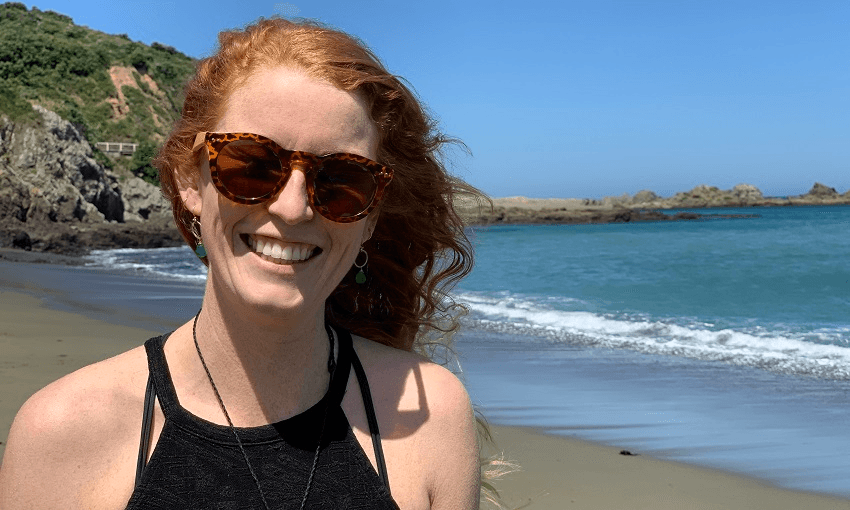A Wellington startup is tapping into the worldwide move away from ocean-destroying sunscreens with a natural product.
Sailing fans got used to seeing helmsman Peter Burling’s ghost-like face as he and the Emirates Team New Zealand crew battled to reclaim the America’s Cup in 2017. Red-headed Burling clearly felt the need for heavy sunblock to protect his fair skin from the hot Bermuda sun.
It’s a problem Conservation Volunteers New Zealand’s Wellington manager Natalie Jones is familiar with. The copper-haired conservationist is constantly in and around the water and wears sunscreen almost daily.
But on a flight back from Hawaii last year she was horrified to see a documentary about the damage traditional sunblocks are doing to her beloved marine environment. “It’s quite well known in popular dive spots like Hawaii how toxic sunscreen is to the ocean, but I had no idea.”
It is now generally accepted that the chemicals found in traditional sunblocks contribute to the bleaching of coral reefs and accumulate in other sea life. On January 1 the Pacific island nation of Palau became the first country in the world to ban pollutant-chemical sunscreens. Over the next couple of years similar bans will come into effect in the British Virgin Islands, Hawaii, Florida’s Key West and the Caribbean island of Bonaire, while resorts in Mexico are requesting that visitors use non-pollutant sunscreens.
As soon as Jones landed back in Wellington she high-tailed it to her nearest ecostore in search of a reef-friendly sunblock. “But I could not find a genuinely eco-friendly product,” she says. “There were one or two that were close, but they were still packaged in plastic bottles. And there wasn’t a lot of information. It was really hard for people to learn what was actually truly safe for the environment.”
A year and several thousand dollars of her own savings later, Jones has produced a plastic-free, non-polluting sunscreen called Seasick which is now doing a steady trade through three lower North Island retail outlets and online. Seasick has just four ingredients – non-nano zinc oxide, coconut oil, fair trade refined shea butter, and beeswax. It comes in a recyclable aluminium tin, and a portion of the proceeds go to local freshwater and marine education charity Mountains to Sea.
Zinc oxide is one of the main alternatives to pollutant chemicals in sunscreens such as the ‘three o’s’ – oxybenzone, octinoxate and octocrylene. Zinc particles form an outer barrier on the skin which reflects ultraviolet light, thereby protecting the skin beneath. In the right formulation it is just as effective as pollutant-chemical sunblocks, and much safer for the environment. So it begs the question: why hasn’t it become more widely used before now?
The older style white zinc creams à la Peter Burling can shoulder some blame, Jones believes. “I feel like zinc oxide got a bad rap because of the way it was introduced to the market with the full ghost-white surfer look.”
In contrast it took her several attempts and four rounds of lab testing to come up with a mix that had a high enough sun protection factor (SPF) but without leaving a film on the skin. “I was initially using powdered zinc, but I couldn’t get a high enough SPF without making the formula go grainy and white. So I spent ages looking for better solutions and I finally found a non-nano zinc that comes in a coconut derivative solution. It’s all natural, but it means it was really well dispersed and it managed to get my SPF up over 30.” Seasick takes a little more rubbing in than traditional sunscreens but users typically report that it absorbs into the skin well, she says.
Seasick is far from the only non-pollutant-chemical sunscreen on the market, but as Jones has discovered the definition of ‘natural’ varies widely. Some products omit the main offending chemicals but still contain fragrances and other additives, and come in unsustainable packaging. One thing to look out for is whether they use ‘non-nano’ particles of zinc. Nano-particles are so small they can be absorbed by plankton and fish, and should be avoided, Jones says.
Some natural brands also haven’t gained the certification to ensure they meet the Australian and New Zealand standard for sunscreen, and so aren’t able to officially claim an SPF, Jones says. Seasick is currently going through the certification process.
As well as being a fervent conservationist Jones has entrepreneurial blood in her veins (her parents were business people), and is inspired by eco-entrepreneur friends such as Shay Lawrence who founded reusable straw maker CaliWoods. So far she has bootstrapped Seasick because she wanted to focus on getting a product out there, but she would love to turn it into her day job and her next move may be to seek investment. “People are always asking me about natural insect repellent, lip balms, sticks for surfers. If I was going to branch out and do that kind of thing I think crowd funding would be a good way to support it.
“Conservation and protecting the environment is all I think about, really. I do it for a job but I also try to kind of live that way as well. I love being outside and in the water but I get pretty saddened about the state of the water, so it’s about anything I can do to make choices easy for people.”
